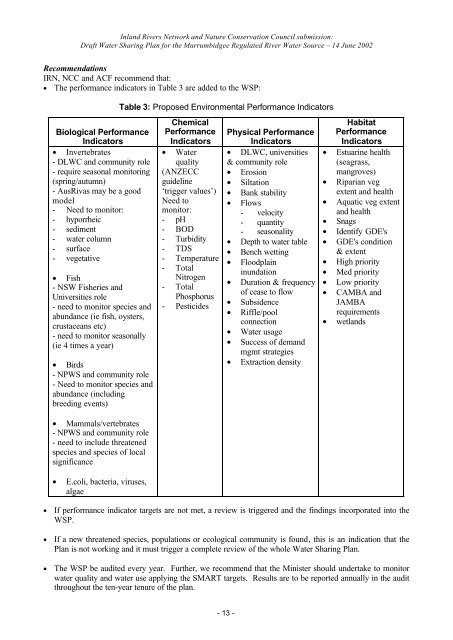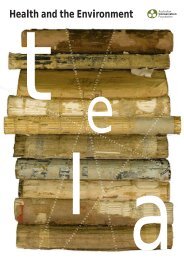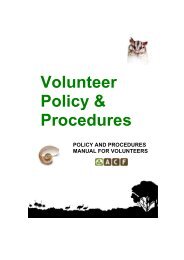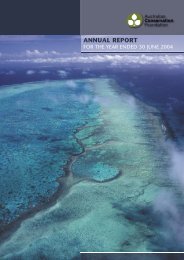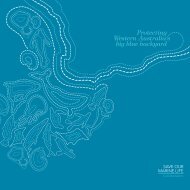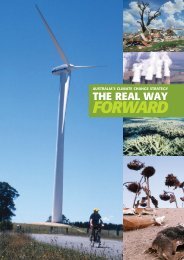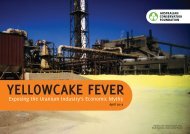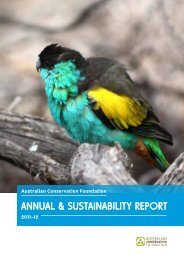Submission on Draft Water Sharing Plan for the Murrumbidgee River
Submission on Draft Water Sharing Plan for the Murrumbidgee River
Submission on Draft Water Sharing Plan for the Murrumbidgee River
Create successful ePaper yourself
Turn your PDF publications into a flip-book with our unique Google optimized e-Paper software.
Inland <strong>River</strong>s Network and Nature C<strong>on</strong>servati<strong>on</strong> Council submissi<strong>on</strong>:<br />
<strong>Draft</strong> <strong>Water</strong> <strong>Sharing</strong> <strong>Plan</strong> <strong>for</strong> <strong>the</strong> <strong>Murrumbidgee</strong> Regulated <strong>River</strong> <strong>Water</strong> Source – 14 June 2002<br />
Recommendati<strong>on</strong>s<br />
IRN, NCC and ACF recommend that:<br />
• The per<strong>for</strong>mance indicators in Table 3 are added to <strong>the</strong> WSP:<br />
Biological Per<strong>for</strong>mance<br />
Indicators<br />
• Invertebrates<br />
- DLWC and community role<br />
- require seas<strong>on</strong>al m<strong>on</strong>itoring<br />
(spring/autumn)<br />
- AusRivas may be a good<br />
model<br />
- Need to m<strong>on</strong>itor:<br />
- hyporrheic<br />
- sediment<br />
- water column<br />
- surface<br />
- vegetative<br />
• Fish<br />
- NSW Fisheries and<br />
Universities role<br />
- need to m<strong>on</strong>itor species and<br />
abundance (ie fish, oysters,<br />
crustaceans etc)<br />
- need to m<strong>on</strong>itor seas<strong>on</strong>ally<br />
(ie 4 times a year)<br />
• Birds<br />
- NPWS and community role<br />
- Need to m<strong>on</strong>itor species and<br />
abundance (including<br />
breeding events)<br />
• Mammals/vertebrates<br />
- NPWS and community role<br />
- need to include threatened<br />
species and species of local<br />
significance<br />
• E.coli, bacteria, viruses,<br />
algae<br />
Table 3: Proposed Envir<strong>on</strong>mental Per<strong>for</strong>mance Indicators<br />
Chemical<br />
Per<strong>for</strong>mance<br />
Indicators<br />
• <strong>Water</strong><br />
quality<br />
(ANZECC<br />
guideline<br />
‘trigger values’)<br />
Need to<br />
m<strong>on</strong>itor:<br />
- pH<br />
- BOD<br />
- Turbidity<br />
- TDS<br />
- Temperature<br />
- Total<br />
Nitrogen<br />
- Total<br />
Phosphorus<br />
- Pesticides<br />
Physical Per<strong>for</strong>mance<br />
Indicators<br />
• DLWC, universities<br />
& community role<br />
• Erosi<strong>on</strong><br />
• Siltati<strong>on</strong><br />
• Bank stability<br />
• Flows<br />
- velocity<br />
- quantity<br />
- seas<strong>on</strong>ality<br />
• Depth to water table<br />
• Bench wetting<br />
• Floodplain<br />
inundati<strong>on</strong><br />
• Durati<strong>on</strong> & frequency<br />
of cease to flow<br />
• Subsidence<br />
• Riffle/pool<br />
c<strong>on</strong>necti<strong>on</strong><br />
• <strong>Water</strong> usage<br />
• Success of demand<br />
mgmt strategies<br />
• Extracti<strong>on</strong> density<br />
Habitat<br />
Per<strong>for</strong>mance<br />
Indicators<br />
• Estuarine health<br />
(seagrass,<br />
mangroves)<br />
• Riparian veg<br />
extent and health<br />
• Aquatic veg extent<br />
and health<br />
• Snags<br />
• Identify GDE's<br />
• GDE's c<strong>on</strong>diti<strong>on</strong><br />
& extent<br />
• High priority<br />
• Med priority<br />
• Low priority<br />
• CAMBA and<br />
JAMBA<br />
requirements<br />
• wetlands<br />
• If per<strong>for</strong>mance indicator targets are not met, a review is triggered and <strong>the</strong> findings incorporated into <strong>the</strong><br />
WSP.<br />
• If a new threatened species, populati<strong>on</strong>s or ecological community is found, this is an indicati<strong>on</strong> that <strong>the</strong><br />
<strong>Plan</strong> is not working and it must trigger a complete review of <strong>the</strong> whole <strong>Water</strong> <strong>Sharing</strong> <strong>Plan</strong>.<br />
• The WSP be audited every year. Fur<strong>the</strong>r, we recommend that <strong>the</strong> Minister should undertake to m<strong>on</strong>itor<br />
water quality and water use applying <strong>the</strong> SMART targets. Results are to be reported annually in <strong>the</strong> audit<br />
throughout <strong>the</strong> ten-year tenure of <strong>the</strong> plan.<br />
- 13 -


